I don't think it's a gray pygmy venus -- end of shell isn't squared off enough for me. Not sure about what else it could be -- I'll keep searching.Sally Thomas: could it be glory-of-the-seas venus? my references say that gray pygmy venus is 1/2 "
Terri K. Hathaway
Marine Education Specialist
North Carolina Sea Grant
Paul Monfils: Hello Sharon,Sure looks like he's correct.
Yesterday I visited your impressive website. I noticed that the shell you have listed as "gray pygmy venus" is actually the spiny paper cockle, Papyridea lata Born, 1778. I'll take a closer look at some of the others shortly, when I have a little more time.
Terri K. Hathaway
Marine Education Specialist
North Carolina Sea Grant
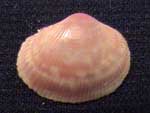
Click for 320px image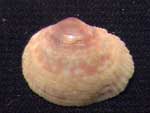
Click for 320px image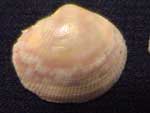
Click for 320px image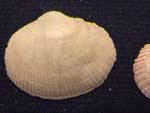
Click for 320px image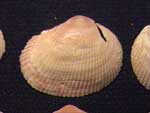
Click for 320px image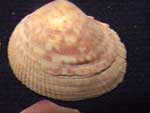
Click for 320px image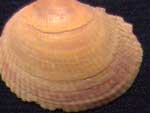
Click for 320px image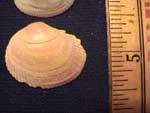
Click for 320px image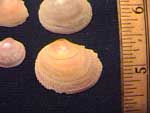
Click for 320px image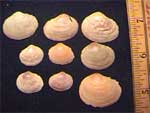
Click for 320px image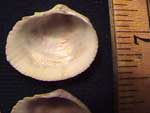
Click for 320px image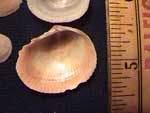
Click for 320px image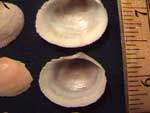
Click for 320px image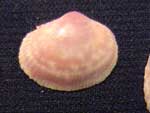
Click for 320px image
Bivalves
Spiny Papercockle Papyridea soliniformis (Bruguiere)
Description: (1 1/2 inches) Thin, elliptical shell slightly elongated and not deeply cupped. Radial ribs with tiny spines near their ends. Prominent lateral teeth on hinge. No lunule or pallial sinus.
Color: Exterior and interior pinkish white, mottled with brownish orange and pink.
Habitat: Lives offshore. Its short siphons indicate that it lives just below mud surface. Occasionally found on ocean beaches from Cape Lookout south.
Range: North Carolina to Brazil.
Notes: Cockles are commonly eaten in Europe. The animal has a long, powerful foot that allows it to be active.
Bivalves
Gray Pygmy Venus Chione grus (Holmes)
Description: (3/8 inch) Oblong shell. Beak about one-quarter of the shell length from the rounded front end. Squarish back end. Surface with many fine radial ribs crossed by equally fine concentric lines. Lateral and cardinal teeth on hinge. Narrow, heart-shaped lunule. Small pallial sinus.
Color: Exterior gray to white (sometimes light pink) with purplish brown near both ends of the hinge. Dark brown lunule. White interior with purplish brown near one end.
Habitat: Lives in sand and mud in high-salinity estuaries south of Cape Hatteras and also offshore in waters up to 100 feet deep. Attaches to shells in shell-reef areas. Common on ocean beaches.
Range: North Carolina to Florida and Texas.
Source: Seashells of North Carolina, North Carolina Sea Grant College Program



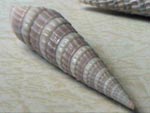

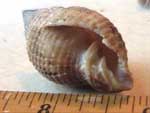





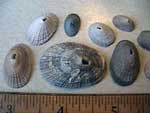

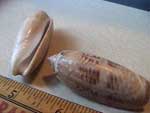
1 comment:
This the Spiny Paper Cockle, Papyridea lata (Born, 1778)
Post a Comment